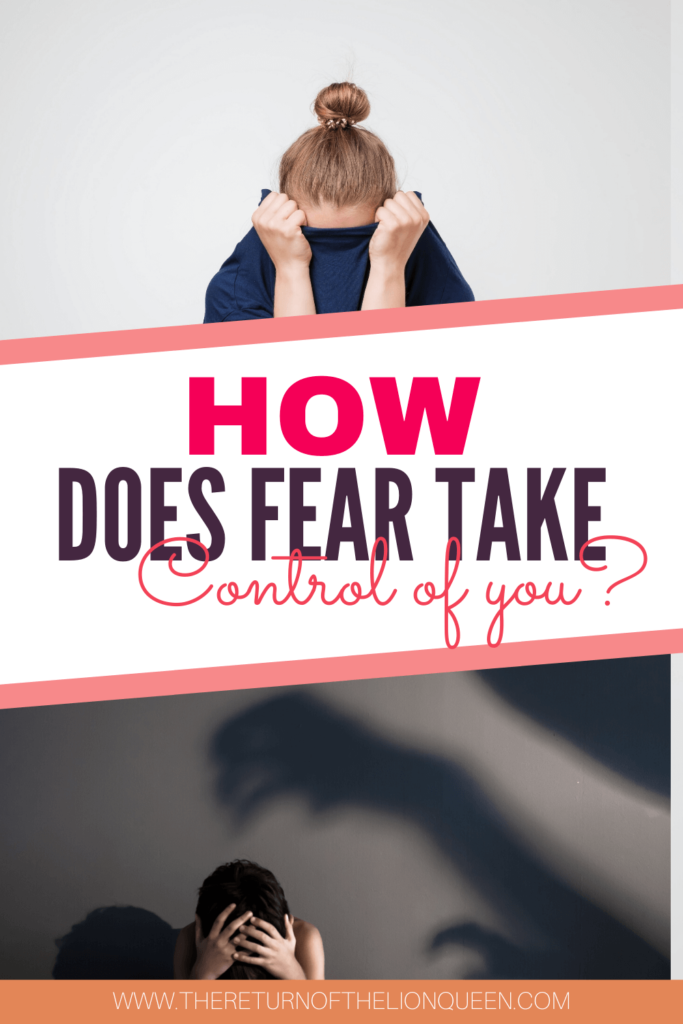If you are worried about the COVID-19 situation and the changes it is going to bring or if the fear and uncertainty is causing you debilitating stress and anxiety, this might help you. This post can help you understand how our body responds to fear and threat and what we can do to improve the situation. So how to beat fear and give it the boot?
While we all know that change is important and stimulates growth, it is not crazy to expect anxiety and nervousness to set in when a whole load of uncertainty is dangling around us. So how do we catch the bull by its horn?
I find it best to start from the basic, which is to remind myself how our systems work. This is key to tackling the issue, instead of blocking it or pretending it is not there or instead of burying myself in other things to distract me.
Step1 –How to beat fear: Brain dynamics
To understand this it is important to know the mechanics of how our body works and how our mind responds to fear, threat and uncertainty.
Our brain performs different functions and one of the most primitive one is to keep us safe. In caveman days, man had to be swift and quick especially when he was attacked by an animal. There was no time to decide right from wrong, and he had to take quick action to keep himself from becoming prey. The flight or fight response evolved to improve his chance of survival.

What is the flight or fight response ?
It is an automatic or default response to physical danger that allows us to react quickly without thinking. If we waited to analyse the situation, we would have surely been the animals lunch!
Step 2-How to beat fear :Brain functions
First, our amygdala, the primitive part of our brain automatically activates the fight-or-flight response immediately and prepares the body to fight or run away. At at the same time, our frontal lobes are processing the information to determine if danger is present and tries to think of the most logical response to it.
What is the Amygdala?
It is the primitive part of the brain and is a collection of cells near the base of the brain. There are two of them, one on each hemisphere and is key in processing strong emotions like love or fear.
What are the Frontal Lobes?
The frontal lobes are the two large areas at the front of the brain. They’re part of the cerebral cortex, which is a newer, rational, and more advanced brain system. This is where thinking, reasoning, decision-making, and planning happen. The frontal lobes allow you to process and reflect on your feelings. After reflection, you understand whether the danger is real or not or to what capacity. Then you can manage these emotions of fear and anxiety accordingly and determine a logical response.

Step 3-How to beat fear: Brain response to mild and strong threats
How do we respond when the threat is mild?
When threat is mild/moderate, the frontal lobes override the amygdala, and we respond in the most rational, appropriate way. We are not acting like lunatics and not letting our emotions get the better of us. We are kinder and more compassionate both to ourselves and others.
What happens when the threat is strong?
When the threat is strong, the amygdala acts quickly and automatically triggers the flight-or-fight response and sometimes overpowers the frontal lobes. It works in our favour only when we are faced with a serious threat where swift and quick action is needed. e.g. the house is on fire. But if the threat is only perceived to be strong but isn’t, we over-react, do embarrassing things and let our emotions consume us.
Step4: How to beat Fear – How the automatic response of the amygdala affects the body
When the amygdala perceives a threat, it releases two hormones cortisol and adrenaline. These both are released from the adrenal glands to prepare your body to flight or fight.
CORTISOL:
Cortisol is a steroid hormone that affects many of our body’s functions, including preparing it for the fight-or-flight response
ADRENALINE:
Stress hormones, primarily adrenaline, does a number of things such as
- It relaxes your airways, opening them up so you can take in more oxygen.
- It increases the blood flow to your muscles for maximum speed and strength.
- Increases your blood sugar for more energy.
- Dilates your pupils to enhance your vision.
All these help the body to flight or fight and get ourselves out of threat. When we notice these symptoms, we need to be aware that our stress hormone is geared for a threat.
- Rapid heartbeat
- Sweaty palms
- Goosebumps on your skin
Step 5: How does you beat fear: Reassess the amygdala
So is the amygdala a royal a pain-in -the- ass?
No. It isn’t! It was appropriate for humans in caveman days and when we face threats like a house being on fire and we need to be prompt, swift and take charge of the situation. We need this automatic response in those situations.
The issue arises when the amygdala remains in the driver seat and takes control. Let us see how that happens:
Times have changed..
Since man has evolved from caveman days, we do not have the same threats anymore. However, there are many psychological ones caused by the pressures and stress of modern life like job security, perfectionism, money and prestige etc. Added to that are also things on the news or social media about dangerous events like rape, burglary, or natural disasters like tsunami and earthquakes or terror attacks or pandemic updates.
Can we cope with the change?
Since the amygdala is a primitive function of the brain, it cannot distinguish between a physical threat and stress. It perceives stress as a threat and responds to it as though it is indeed a physical threat to us. When the stress makes us feel anger, aggression or fear, it takes control of our brain and triggers the flight or fight response. It often results in a sudden, illogical, and irrational overreaction to the situation .
Step 6: How to beat fear: Understanding the Amygdala Hijack
The problem arises when the amygdala overrides/disables the frontal lobes. Without the frontal lobes, we can’t think and make rational decisions or control our responses. This term was described as Amygdala Hijack by Daniel Goleman, in 1995, in his book Emotional Intelligence. To put it simply, it is a situation when the control has been ‘hijacked ‘by the amygdala. In such a scenario, we perceive dangers (when it’s real or not, but not as severe as tiger attacks) and let the amygdala take charge of the situation, irrespective whether the situation warrants it or not.
So when you find yourself over-reacting or hyper stressed about what you think is not a severe situation, it is a sign that your Amygdala has hijacked the situation.
Step 7: How to beat fear -Stop the amygdala hijack?
Amygdala Hijack can be eased and stopped by consciously activating your frontal lobes (rational, logical side of the brain). This takes practice and persistence and is not a quick fix solution nor is it an automatic response. The following steps can help when you feel overwhelmed by any situation.
Acknowledge
The first step thing to do is to acknowledge that you are stressed and that your flight/fight response is activated. The next is to pay attention to how your emotions and body is reacting to the stress. e.g – Observe how you feel and how your body responds (e.g body gets tensed). It is difficult to notice these small things at first because we are not used to spending time being aware of ourselves. Awareness of these small changes is the first step. However, if the situation spirals out of control, you can review the episode after it is over. You can ask yourself questions like’ What feelings did it evoke for me?” What thoughts were running through my mind?’
Calm down
When you know you are in the flight/fight mode, try to calm down. Remind yourself that what you are feeling is an automatic response and not necessarily the best or most logical one. For example, I use various methods to stay calm. Sometimes I pay attention to my breathing. You can breathe slowly and evenly and think about the speed and rhythm of your breaths. Focus on what’s going on in your body as you inhale and exhale.
Engage the frontal lobe
When you are calm, consciously try to engage your frontal lobes by thinking about the situation and finding a thoughtful and rational solution.
Step 8 -How to beat fear : Prevent an Amygdala Hijack ?
Identify the trigger
When you feel the symptoms of amygdala hijack starting, try to pause for a moment to notice what triggered it. Anything that causes emotional, physical, or mental stress can be a trigger. There are general categories of stressors that affect everyone to some degree, but specific triggers will be different for everyone. Start by finding your trigger. It will keep you more aware of similar situations in the future.
Observe your response to the trigger
When you feel threatened or afraid, pause and look for behaviours, bodily changes, or warning signs that are happening at the same time. I usually feel angry and my default reaction is to shout or yell if things don’t happen the way I want it i.e if the room is messy, or if it is chaotic or noisy.
Investigate the feelings.
Try to be present and feel the feeling. I realise I get angry and impatient when I see the mess and chaos and my default response is yelling or shouting or nagging. Then I reflect on my reason for needing things for being orderly, neat, calm and peaceful. I realised that I don’t feel safe and secure when there is chaos and mess around. I also get anxious with continuous noise and it makes me feel as though there is an impending threat. Do not be afraid to dig deep. It will probably bring answers to past experiences.
Keep a calming tool kit ready at hand
Calming mechanisms are a key to sorting this issue out. Some of them are meditation, mindfulness, prayer, exercise, walk in nature, spending time in silence etc. It is best to make it a part of your daily routine. E.g. I spend an hour a day walking (Exercise), maintain a journal where I write my thoughts and feelings during the day, spend time in nature or read.
In a nutshell,
The main two ways of preventing a hijack i.e to stop the Frontal lobes from shutting down and overriding the automatic response of the amygdala are :
Calm down
When you calm down, it changes the brain’s focus from responding to a threat or stress to inner peace and calmness. When your body is calm, it produces a hormone called Oxytocin. Research has shown that it decreases stress and anxiety levels when released to certain parts of the brain.
Once you pick your favoured calming method, try to stay in the present and be aware of what you’re feeling and thinking, your bodily sensations, and stimuli from your environment without judging or labelling the situation as good or bad. Focus only on the current moment, not future tasks or past problems. In the beginning, the calming will take longer and with practice, it will be more effective.
Reasoning
Once you calm down, resort to your Frontal lobes to do its job of reasoning i.e Think the situation through, review the possible options and choose the most rational and logical way to respond.
The way forward- How to beat fear
The next time you catch yourself getting anxious or stressed, fear not, for now, you know how to handle it. Remind yourself that your fight or flight response is activated. Start practices to calm your self down. Then become aware of your triggers, emotions and body changes. After you spend some time reflecting, use your frontal lobes to make the best decision. This takes a lot of practice before it becomes a default response to handling stress. Let’s take the first step to making it right.






Lovely read Lana. Good luck on your new venture. Looking forward to reading some more.
Thanks Crisild!